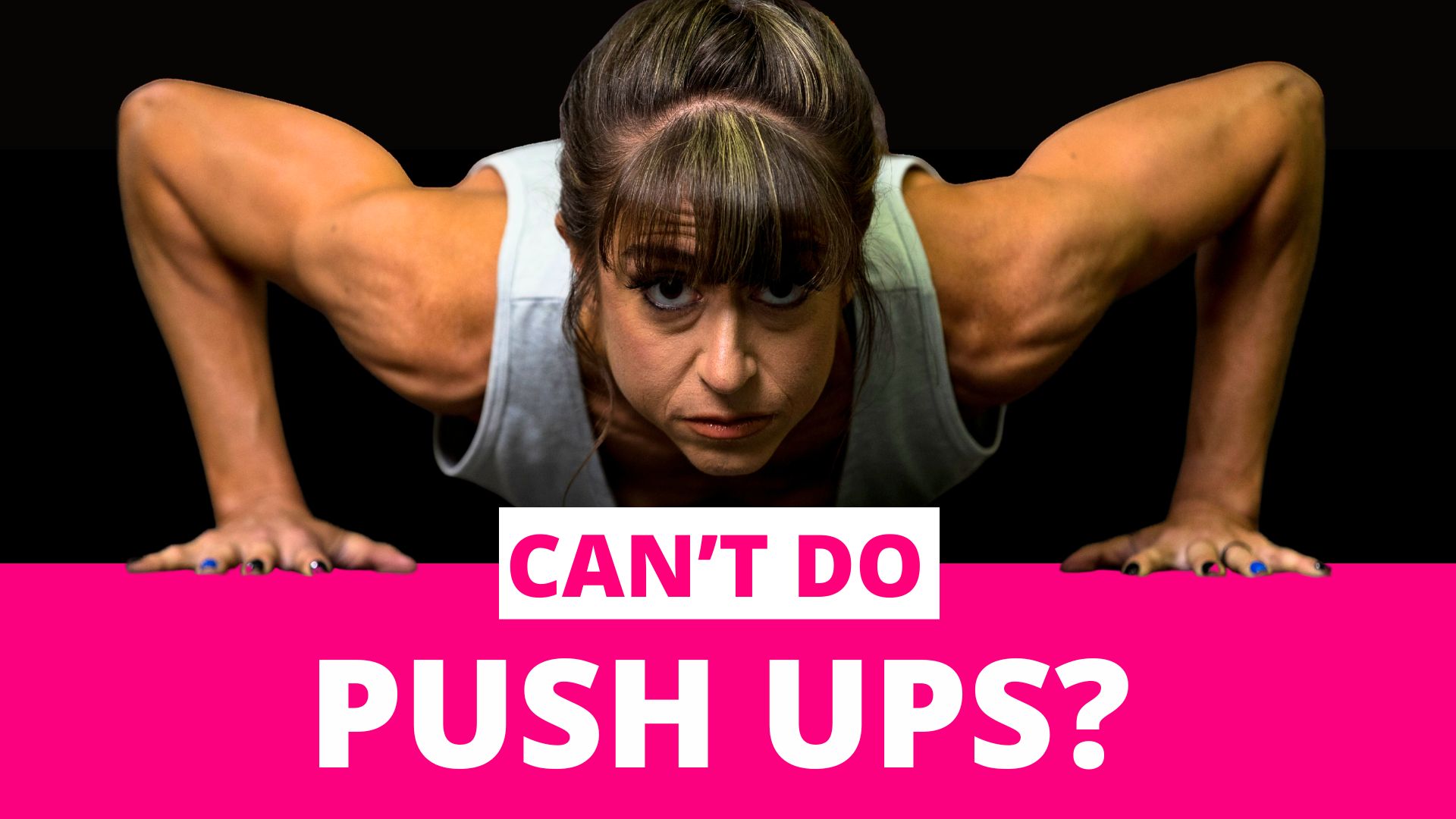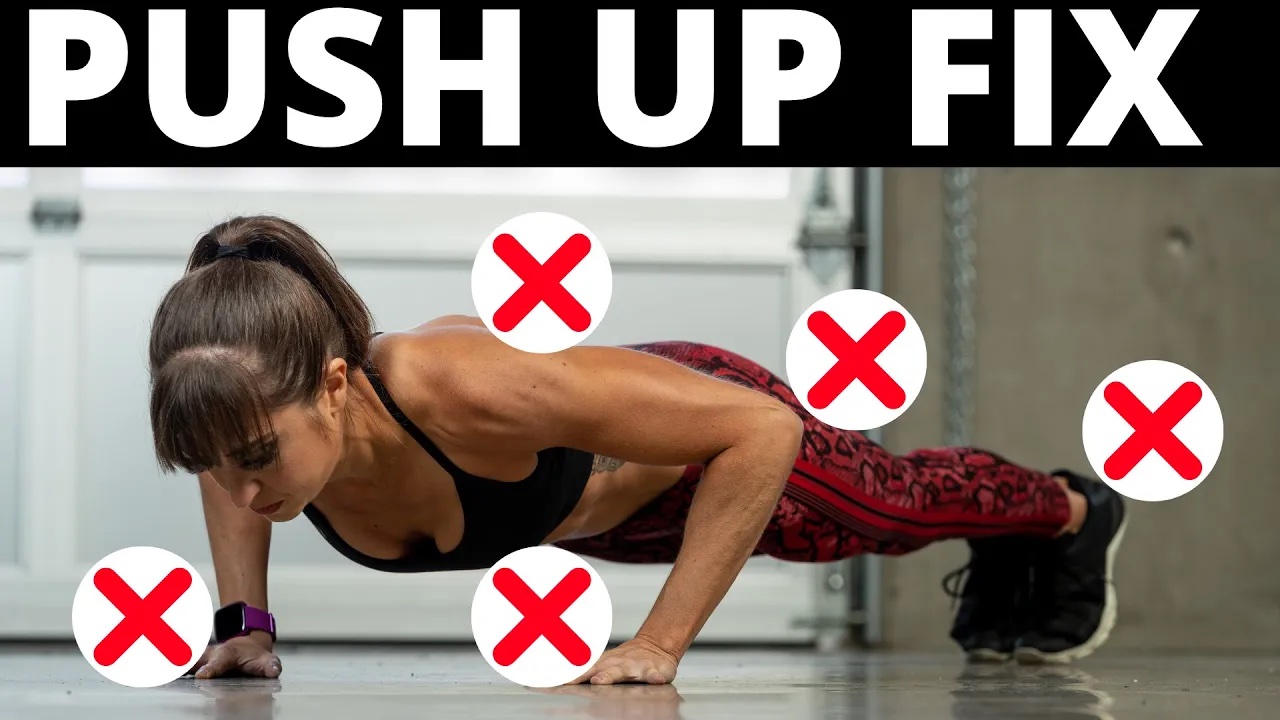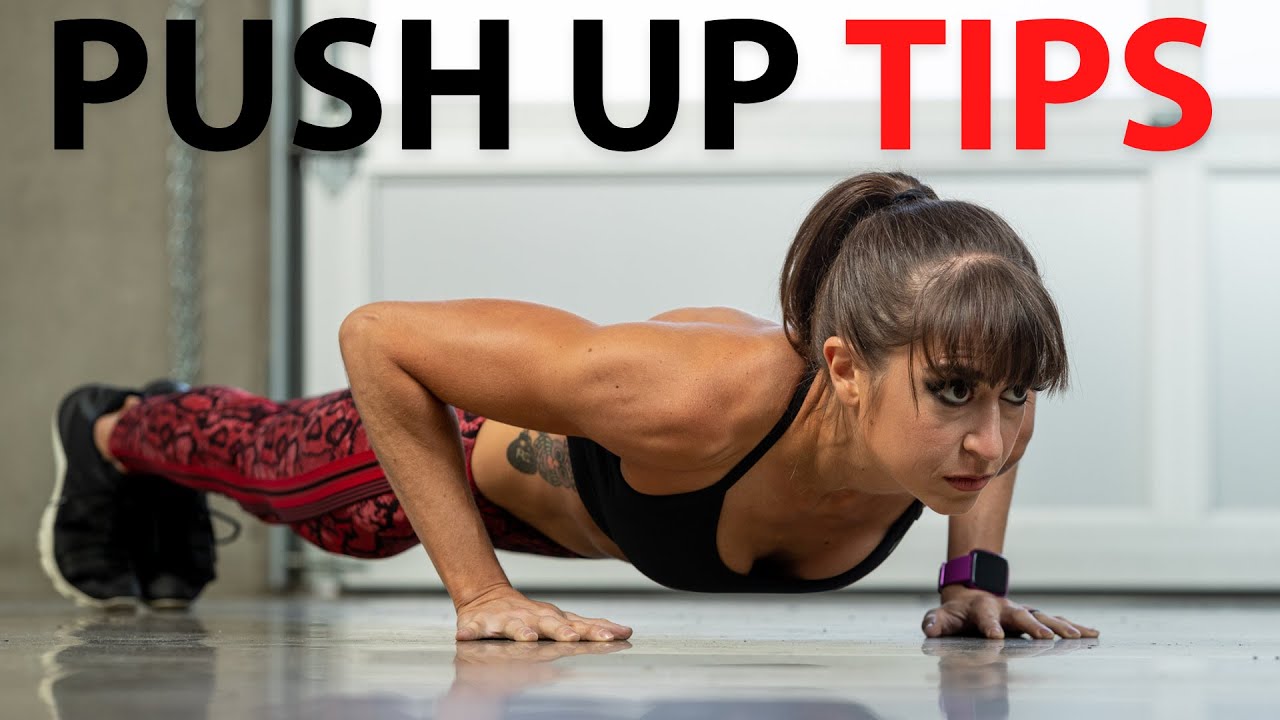
4 Tips To Increase Your Push Ups (In 30 Days)
If your push ups are…well…fuglier than you’d like, then it may be time to check your ego, break things down and focus on regressing to progress.
Sometimes little form deviations creep in and we don’t even realize it.
At times like this, it isn’t just about doing more push ups.
Because practicing improper form or recruitment patterns only further ingrains the movements we want to correct.
The question is….how do you change your form, get the correct muscles working and build up to those picture perfect push ups from your toes?
It isn’t just about simply modifying the push up.
There are actually 4 main forms of skill work that I’ve seen dramatically improve clients’ push up results when combined over the week.
I call it their “skill work” because we are working on specific push up variations or training techniques to improve their push ups skills.
And in this video I want to go over each of these 4 skills and how you can implement them into your weekly training routine, as well as one of the most unsexy secrets to improving your push ups, so you can see great improvements over the next 30 days!
Just remember with each of these techniques, you may need to check your ego and modify further than you’d like to make sure you’re feeling the correct muscles working and keeping that picture perfect form.

And FILM yourself with your push up practice!
By filming, you allow yourself to see your movements to change your cues and movement patterns while staying super intentional and focused on what you feel working as you do the actual work.
You’ll also have a great way to track your progress as your form improves and you advance those push up variations and the skill work you’re doing.
Now diving into the skill work…
I’ve mentioned multiple times you may have to modify moves.
That being said, so often we modify our push ups off our knees or an incline and find ourselves never really progressing.
It feels like we’re just getting stronger at the modification.
And that’s why I like to include Eccentric focused push up skill work first in one workout each and every week.
Once you’re warmed up, you will want to perform a few rounds of eccentric only, or eccentric focused, push ups before then going into whatever other workout you have planned.
Putting the skill work first allows you to do it when you’re freshest and focused so you can be very intentional and controlled with the moves. This also allows you to often do a harder variation than you could if fatigued.
And specifically want to use eccentric push ups because we are strongest in that eccentric portion of movements.
This means we’re able to often do a HARDER variation, even if for the eccentric part of the exercise only, than we maybe even can for the full exercise.
In push ups, the eccentric portion of the move is the lower down.
Eccentric means the elongation or stretch of the prime mover muscle. In the push ups that’s your pecs.
So in the lower down of your push up, you may find you do feel strongest.
You may find you can lower down in a full push up from your toes…but you just can’t seem to get back up!
And we want to use this to our advantage to help us PRACTICE and spend time under tension with a harder variation of the move than we can yet fully control.
Because if we do only work on that modified variation, we will never help ourselves truly progress forward.
So if you can, choose a variation harder than you can perform for the full push up movement, and simply do the lower down only with proper form. Spend about 5 seconds on that slow and controlled decent.
Then simply reset at the top.
This fully eccentric only option is great if you are really in between levels and can’t maintain proper form on the way back up.
If you are instead trying to build up your strength endurance a bit more to increase your rep number, or even in between variations where you can’t yet do the next level with control but your current incline or modification is just a bit too easy, you may find you use an eccentric focused push up instead.
With the eccentric focused variation, you WILL press back up but you’ll still use that slow 5 count lower down to really spend time under tension with the hardest variation you can control.
Just make sure that push back to the top allows you to maintain proper form.
This is great to even help you build up the number of reps you can do once you’ve got picture perfect push ups off the ground.
To use eccentric push up work, try this reps and sets layout…
Choose a variation you can do no more than 6 reps with. If you hit 8 reps, you need to advance the variation. Complete 2-4 sets, resting 90 seconds between sets. On your last set, do a drop set. Right after you finish your 6-8 reps, modify just enough that you can complete 6-8 reps more…but with those making you hit failure.
The next skill I like to include is Bottoms Up Push Up work because it addresses one of the hardest parts of a push up and complements the Eccentric work so well.
This push up variation helps you build the strength to push back up while maintaining that straight line from your head to your heels.
Because in that transition from lowering down to pushing back up is where we often see the most deviations in form pop up and tension being lost.
This skill though is the HARDEST to perform.
Seems simple but truly is deceptively challenging so to help yourself truly perform it well, modify more than you think to start.
You want to set up at the bottom of a push up, really focus on engaging everything even running through a set up checklist to make sure everything is engaged because you’re then going to push up off the ground with everything moving TOGETHER.
You can’t allow yourself to worm. Or your butt to go up in the air.
You want to have everything flexed and be pushing the ground away so you’re almost feeling like your body is hovering off the ground before you officially lift.
But this helps you learn to create and maintain tension throughout the movement and maintain full control while bracing your core.
Even think about that exhale as you push up.
And unlike the eccentric work, for this, you will need to start with a modified variation and even more of one than you usually use.
To include Bottoms Up push up work, you’ll again want to do your skill practice at the start of your workout after your warm up.
You will focus on a variation you can only do 5 reps of. And you’ll perform 4-6 rounds, resting 1-2 minutes between rounds. Do not skip the rest so you can keep working at the hardest variation possible. Do not be afraid to even add in 15-20 seconds rest between reps at points to complete the 5 each round.
Do fewer rounds if you find you’ll have to modify further to complete more than 4. Better to just do the most advanced variation you can for a few quality rounds.
The 3rd skill work I include for clients uses Cluster Sets to help them improve their strength and endurance and create a great training volume but also while using a harder variation of the push up than they usually would be able to for the same number of reps.
Think about the variation of a push up you can right now do for 10 reps.
Now think about what variation you may be able to perform if you could only do 2 reps.
It’s probably a bit more advanced, right?
Cluster sets allow you to do 10 reps but with that variation you normally would only use for 2.
With Cluster Sets, you’ll set your total rep count for the set and divide those reps into mini sets of just 2-3 reps at a time with about 20 seconds between mini sets before you rest longer between rounds after all reps are complete.
You want to choose a variation that really challenges you for just those 2-3 reps.
This helps you keep progressing the variation you can do while getting in more training volume (more reps) at that harder level.
This works because it helps your body adapt to the harder variation, not just get better at the modification, and builds strength to control that movement.
The short rest periods, in the most unscientific terms possible, basically trick your body into believing it can do 10 reps with a version you can really only do for 2 reps.
But this helps you build strength and control fast!
To include this skill work, you want to set a rep count of 8 for each set and perform 3-5 sets.
You should be able to do only 2-3 reps in a row of the push up variation you use for the 8 total reps. And even at the end may find you have to do some singles to get all 8. Rest 10-20 seconds between mini sets and then 90 seconds between full sets.
Better to rest longer though between sets over modifying as the whole point is using that harder variation!
Now the final skill work I like to include with clients is Push Up Holds.
Ever notice you sort of “stick” or fail at specific points in the push up?
Like you can’t lower all the way down without flopping?
Or you get stuck at the bottom or half way up?
That’s where push up holds can help.
You can hold right at your stick point to help you strengthen that position and learn to engage everything correctly where you usually stall.
When we eliminate the movement, we can often focus better on what we feel working and even work on that mind-body connection to recruit muscles harder.
This helps us really perfect and tweak our form and build that stability.
And holds are deceptively hard, building core and upper body strength.
But you may find that by setting up at specific spots in your push up, you can even use a harder or more advanced variation than you can do to complete a full push up.
This can really help you keep progressing toward that first full one from your toes. It can also help you increase your reps by strengthening where you normally fail.
So find the points you struggle with the most in your push up, and include timed holds at those spots really focusing on what you feel working and engaging those muscles harder.
I’ll often include push up holds for 20-30 seconds and 2-3 rounds for clients even as part of their activation work or in an isometric recovery workout for the week. Pairing them even with pull up holds can be killer for the core and upper body!
Now the final tip I want to give is the most unsexy of secrets, and something you probably don’t want to hear…but truly is often the missing component of all of our push up work…
It’s that PREHAB work that we can and should be including in every warm up.
We often think, “I’m weak! That’s why I can’t do more push ups!”
And while improving our strength is key, I know a lot of people that are very strong, can bench press a lot that aren’t that good at push ups.
It isn’t just upper body, or even core strength, that is needed.
It’s good scapular control and activation of so many muscles to work together from your head to your heels.
This means doing that foam rolling, stretching and activation to get things working correctly so you can move efficiently for the push up.
This prehab work will also help you avoid wrist or elbow or shoulder injuries which are so common as people include more push up work in their routines.
So don’t ignore the importance of that 3-part prehab process in your warm up so you can get the correct muscles working and avoid injury to keep working on those skills and building up!
Make all of your focused skill work pay off by getting on that mobility and stability work.
And as you add in that prehab, make sure you’re including all 4 of these skill sessions (1 time each per week) at the start of your workouts for the next 4 weeks.
Want more amazing workouts to improve your push ups and rock those results? Join my Dynamic Strength Program!
–> LEARN MORE




